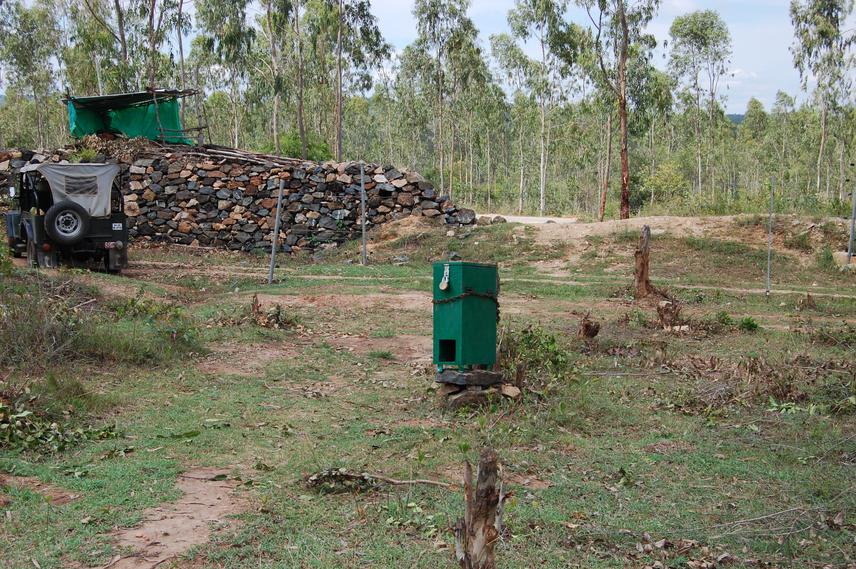Social media videos featuring the project.
Tusk runs from tiger growl
The predator-vocalization playback device - how it works
The predator-vocalization playback device - example of it working
23 Sep 2011 Gundlupet Taluk, India, Indian Sub-continent Elephants | Mammals
The project’s aim is to test the efficacy of a low-cost system of using predator vocalization playbacks as a way of keeping elephants from engaging in crop-raiding.

Crop-raiding by elephants is a particularly damaging example of human-wildlife conflict. As a result, dozens of elephants are killed, up to 11 percent of total grain production in some crop-raiding affected districts is lost and on average, more than 50 farmers are killed by elephants annually in India. We have conducted empirical research to show that using predator vocalizations played back from a speaker can deter elephants from crop-raiding, especially when paired with another deterrence method such as an elephant-proof trench or a solar-powered electric fence. This project undertakes the challenge of implementing these research findings in a low-cost manner.
During the course of our previous study, we noted that while the vocalizations played back to the elephants were quite loud at a level of 105 dB at a distance of one metre from the source, they were far lower at a level of roughly 60 dB at the location where the elephants actually heard the sound. The elephants heard these vocalizations at a distance of roughly 75 metres from the source. Therefore, a sound of lower intensity could be played back from a closer location and still have the same deterrent effect on the elephants, provided that the properties of the playback make it seem as if it is originating further away than it actually is.
This project will explore whether vocalizations recorded at a large distance from a loud source, but played at a close distance to elephants are effective in mitigating crop-raiding by elephants. This would allow for the use of an inexpensive speaker, trigger, and playback devices in the system design. With the knowledge that we have from our previous research on how elephants respond to predator vocalizations, the low-cost playback devices will be placed strategically to achieve maximum protection of crop fields. For example, in coordination with the Forest Department officials, these devices will be placed along with other methods of deterrence, such as electric fences or trenches, at susceptible locations prone to breakage or circumvention. If successful, the device has significant potential for large-scale use in mitigating human-elephant conflict since it is low in cost and assembled with locally sourced components.
Social media videos featuring the project.
Tusk runs from tiger growl
The predator-vocalization playback device - how it works
The predator-vocalization playback device - example of it working